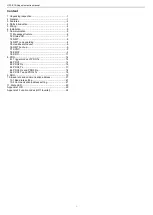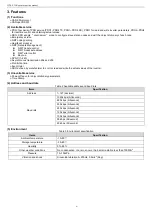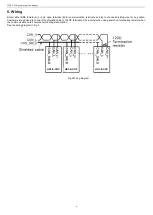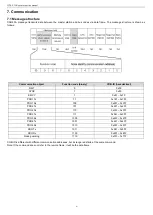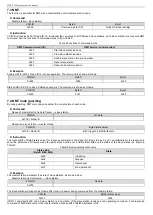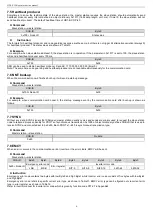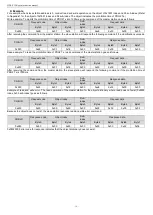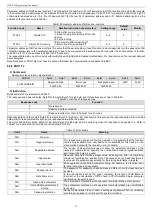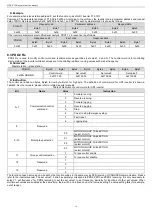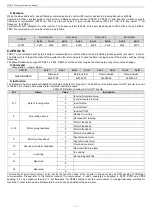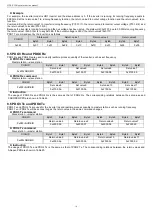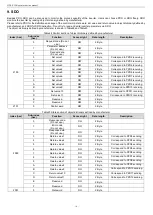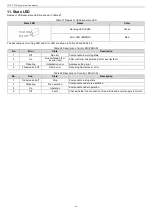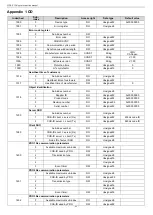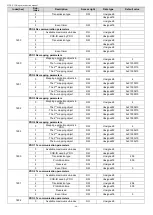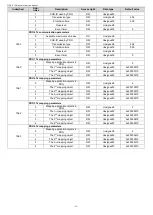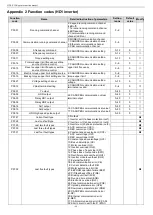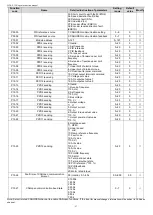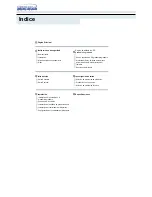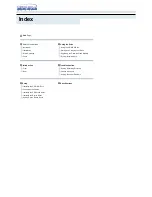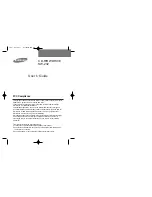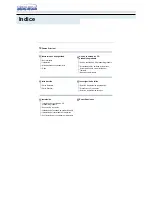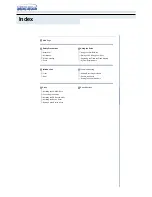
HD1-E CANopen instruction manual
- 14 -
8. PDO
The communication card defines four of PDO Tx (0x1800~0x1803) and four of PDO Rx (0x1400~0x1403) for usage. PDO Rx is the PDO
command that the slave station receives from the master station while PDO Tx is the PDO command that the slave station sends to the
master station.
The control word, state word, set value and return value of each PDO are defined with object dictionary defined by manufacturer. The
purpose is to monitor the process quantity of the inverter either by PDO or by SDO. The following PDO commands are marked with
object dictionary defined by manufacturer in format 0xXXXX.HH. XXXX and HH separately stand for index and sub-index in
hexadecimal.
8.1 Trigger modes of PDO Tx
Each PDO Tx is defined with transmission type, prohibition time and event timer. They separately correspond to sub-indexes 0x02, 0x03
and 0x05. Therefore, the object dictionary index the transmission type of PDO2 Tx corresponds to is 0x1801, the sub-index is 0x02,
similarly for other PDO Tx. Refer to Appendix object dictionary for detailed information. The unit of prohibition time and event timer is
millisecond.
Synchronous trigger: When the transmission type is set to 1~240, PDO Tx is synchronous transmission. For example, set PDO2 Tx
transmission type to n (1
≤n≤240). Then the slave station will send a PDO2 Tx command once it receives n of SYNC, similarly for other
PDO Tx.
Asynchronous trigger (254): When the event timer is non-zero, the slave station will send PDO Tx regularly. For example, the event
timer of PDO2 Tx is set to 200, the slave station will send a PDO2 Tx every 200ms. When the event timer is zero, the slave station will
send the PDO Tx as long as corresponding PDO Tx data change. However, the interval for sending is limited by prohibition time. The
same PDO Tx can be sent only once in prohibition time to reduce the load of bus efficiently. When the prohibition time is less than 50ms,
work according to 50ms.
Asynchronous trigger (255): When the event timer is non-zero, the slave station will send PDO Tx regularly. For example, the event
timer of PDO2 Tx is set to 200, the slave station will send a PDO2 Tx every 200ms. When the event timer is zero, the slave station will
send the PDO Tx as long as it receives corresponding PDO Rx. For example, the slave station will send a PDO2 Tx after receiving a
PDO2 Rx.
Table16 Avaliable trigger modes
Trigger
mode
Transmission
type(decimal)
Event trigger
PDO1 TX
PDO2 TX
PDO3 TX
PDO4 TX
Syn
1~240
/
Not
available
Available
Available
Available
Asyn
254
Event timer
Not
available
Available
Available
Available
Prohibition time
Not available
Available
Available
Available
255
Event timer=0
Available
Available
Available
Available
Event timer
Not available
Available
Available
Available
Table17 PDO Tx default values
PDO1 TX
PDO2 TX
PDO3 TX
PDO4 TX
Transmission type
255
254
254
254
Event timer (ms)
0
0
0
0
Prohibition time (ms)
500
500
500
500
Please refer to SDO for information on how to set trigger types of PDO Tx.
8.2 PDO1
PDO1 is used to read and write inverter parameters. PDO1 has similar functions as SDO, SDO for object dictionary read and write while
PDO1 for inverter parameters read and write.
Note: PDO1 Tx only supports asynchronous transmission 255, so do not set the transmission into other types, nor set the event timer for
sending the master station PDO1 Tx regularly.
8.2.1 PDO1 Rx
⚫
Command
Request: master station
→slave station
COB-ID
Byte0
Byte1
Byte2
Byte3
Byte4
Byte5
0x200+NODE-ID
Request code
Parameter address
Request data
0x2100.00
0x2100.01
0x2100.02
⚫
Instruction
The request code has two bytes with low Byte0 and high Byte1. The object dictionary defined by manufacturer is: index 0x2100,
sub-index 0x00. See the functions of the request code in Table18.
Table18 Functions of request code
Request code
Function
0
No task
1
Read parameters
2
Modify parameters [only RAM]
4
Modify parameters [both RAM and EEPROM] (reserved)
The parameter address made up of two bytes with low Byte2 and high Byte3 indicates read or modified data address.

